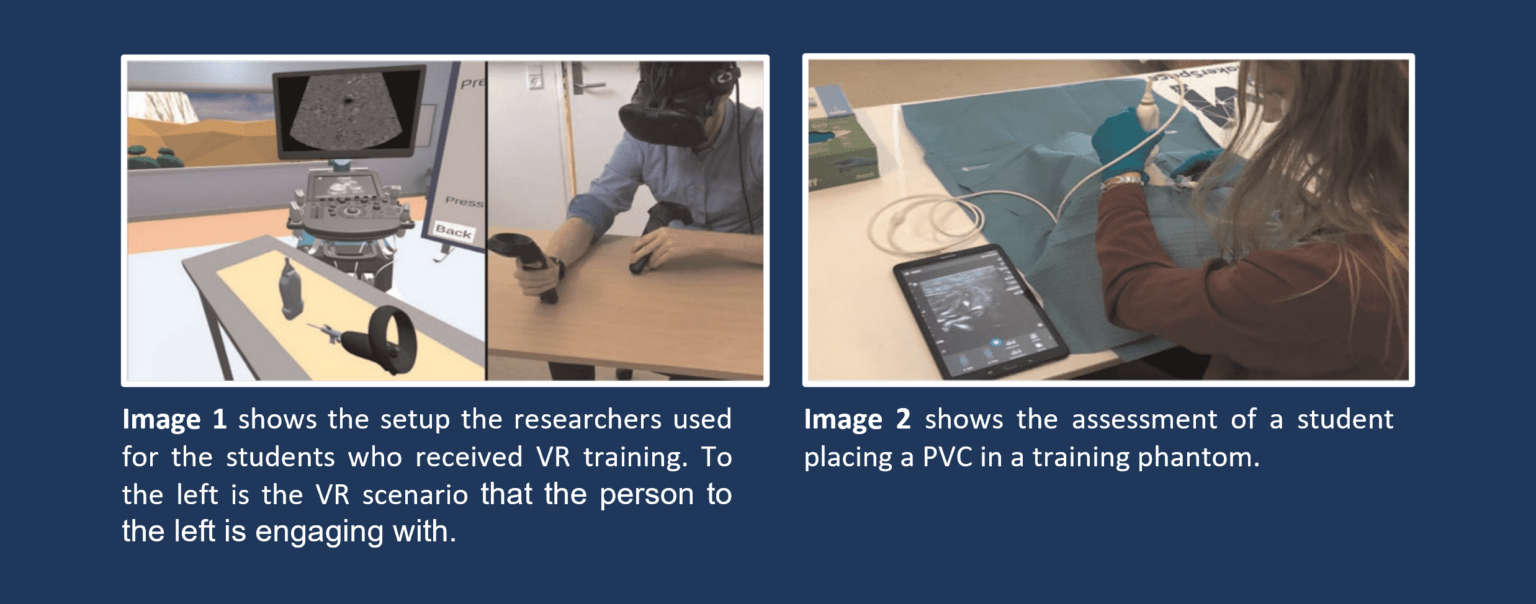Placement of peripheral venous catheters (PVC) is a procedure used in many areas of the healthcare sector to deliver fluids or medicine directly into a patient’s bloodstream. For an untrained person, it can often be difficult to place a PVC correct – often causing great discomfort to the patient, as it can take several attempts to get it placed correctly.
The aim of this pilot study was to examine the learning effect of adding approximately 15 minutes of VR training to an existing e-learning course on ultrasound-guided placement of PVC.
The researchers behind the project recruited 19 medical students from University of Southern Denmark, where 9 students were randomly selected to receive only e-learning, while 10 students received only VR training. Afterwards the students were asked to place a PVC on a training phantom.

The subsequent test showed that the group receiving VR training placed the PVC correct in 22 out of 30 cases, whereas the group without VR training only placed the PVC correct in 6 out of 27 cases. The study showed a relative improvement of more than 300% in correct placement of a PVC in the group that received the supplemental VR training compared to e-learning alone.
The study showed that adding VR training to an already existing e-learning course could significantly increase the learning outcome.
